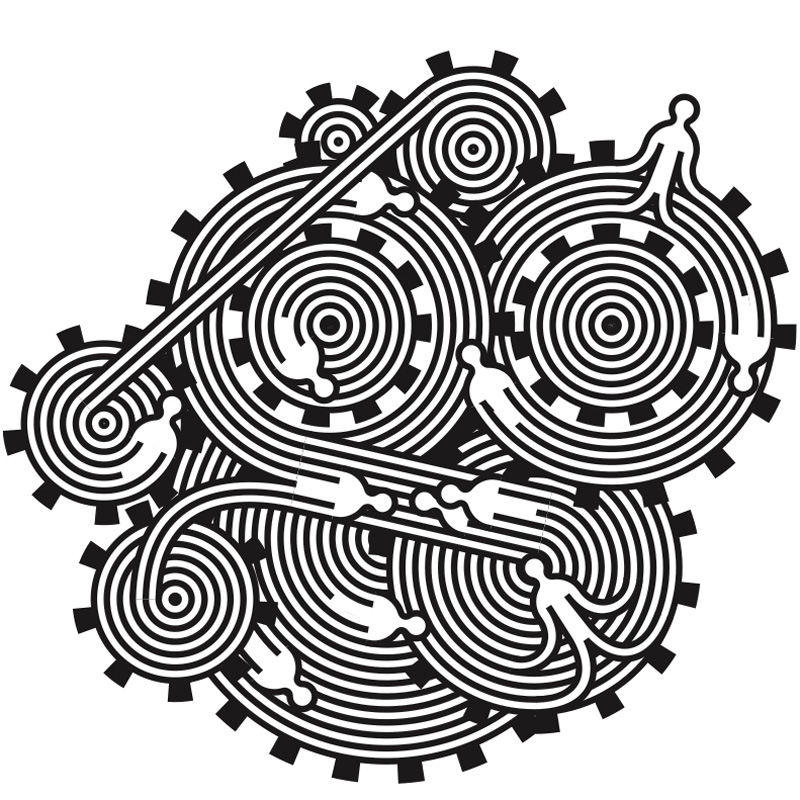Power structure insight
Contents
Five Insights: Power Structure
Seeing things whole leads to making things whole. The holoscope begets the holotopia.
We come to the holotopia when we pursue a theme of interest with the help of the holoscope. First we see that the way we normally look at that theme left something large and essential in the dark. When we illuminate that with the help of the holoscope, the result is an insight, and a reversal of the ways in which the interest is normally understood and pursued. The federation of the insight begins with a story, which is typically a vignette revealing the insight of a person who discovered it. It is completed by weaving that story with other related ones.
The Power Structure insight, which is introduced here, is really a combination of three closely related insights.
Interests
- Contemporary issues
- Democracy
- Innovation
Scope
"The whole" here – as illustrated in the above ideogram – is the socio-technical systems we are part of. We see them as large-size 'machines', whose purpose is to take our daily work as input, and turn it into socially useful effects. If in spite of all the time the machines saved us, we still seem to be as busy as ever – should we not look at those 'machines' and see if they might be wasting our time? And if the result of our best efforts are problems rather than solutions – should we not see if those 'machines' might be causing those problems?
Scope
The view – how misconstructed, wasteful, defective, damaging... – our systems tend to be is breath-taking!
We considered calling this insight "The systems, stupid!", which is a paraphrase of Bill Clinton's 1992 successful presidential campaign slogan, "The economy, stupid!". It's not the economy. It's the systems! Once this is understood, the old political agendas fade into oblivion – and completely new ones emerge and come to the forefront. If you ever wondered why the holotopia is "the new red"... and "the new green"...
Imagine a bus without steering and braking controls, and with candle headlights. That's our democracy...
We just cannot solve our problems by working within the systems that created them!
Consequences
- Global issues
- Justice: xxx TBA...
- Democracy
- Innovation
The bottom line
And if this may seem all too complex, here is a way to make it simple. Very simple!
Vibeke didn't like this (private joke of mine), yet she may...
But seek ye first the systemic wholeness, in all matters and on all levels detail; and all these things shall be added unto you.
Resolution
Wholeness as value; and systemic innovation.
In a bit more detail: Look at the two synergistic relationships with the two bottom-line insights. The point is to see knowledge as a systemic component – not as a DESCRIPTION of "reality". The natural next step is to create a system which federates knowledge by turning insights into systemic change. The practical method is to create a prototype and a transdiscipline around it.
The connection with the Narrow Frame insight: We learn to see things in new ways – and see what they may lack to be whole.
Formulation
Text
Story
The story here is about Erich Jantsch, in the context of the Club of Rome's quest for the solutionatique. Norbert Wiener comes in first, to put the ball in play. Yes, our system lacks feedback, and steering. "The headlights are dim, and the steering and braking controls are dysfunctional", observed Engelbart. Jantsch then organized a team in Bellagio...
Keywords
Prototypes
The GcG and The CoZ
- Back to five insights.

